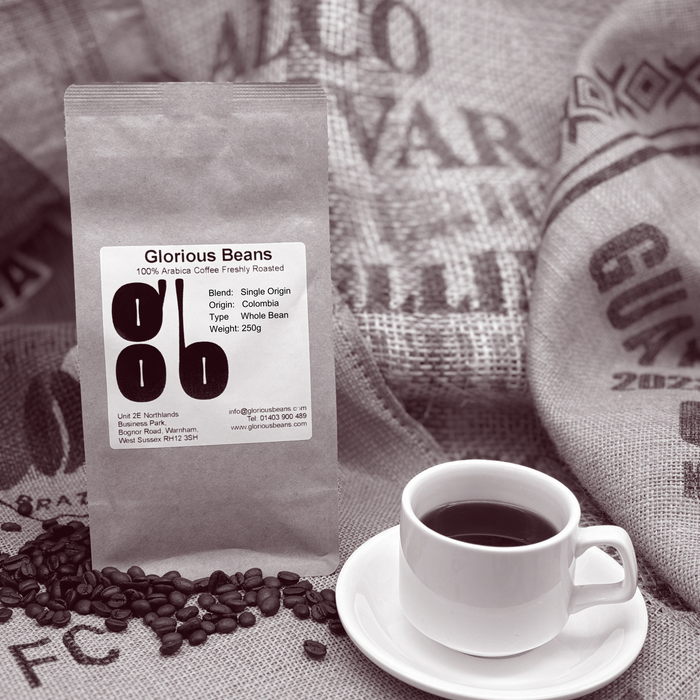A Guide Before Buying SOE Single Origin Espresso
A Guide Before Buying SOE Single Origin Espresso
Blog Article
Discovering the Abundant Tastes of Coffee Beans: a Deep Study Coffee and Blended Coffee Beans
When you explore the abundant flavors of coffee beans, you discover an intricate world where each selection brings its own character to your mug. Understanding the beginnings, processing approaches, and roasting techniques can transform your coffee experience. As you browse with the art of espresso and the imagination behind mixed coffees, you'll start to appreciate the subtleties that make each sip distinct. What you'll uncover following could change the method you appreciate your early morning brew.
The Origins of Coffee Beans: Discovering Terroir and Flavor Profiles
When you take a sip of coffee, you're not just enjoying a beverage; you're experiencing a rich tapestry of tastes shaped by the beans' origins. Each area generates distinct flavor profiles affected by altitude, soil, and environment. As an example, beans from Ethiopia typically burst with intense, fruity notes, while those from Colombia tend to offer a well balanced, nutty sweetness.
As you discover various origins, you'll notice just how terroir-- the ecological variables influencing a plant-- plays an important duty - Single Origin Espresso. The exact same coffee range can taste substantially different relying on where it's expanded
When you take into consideration these factors, you start to value the complexity behind your mug. Each sip informs a tale of the land and the farmers that supported the beans. So, following time you delight, think about the trip your coffee took before it reached your hands, and enjoy those elaborate flavors that show its beginning.
Understanding Espresso: The Art and Science Behind the Brew
When you think of espresso, it's not almost the strong flavor; it's also about the techniques that bring it to life. Understanding exactly how different preparation methods impact taste can transform your brewing experience. Let's explore the ins and outs of coffee prep work and uncover the special taste accounts that make each cup special.
Coffee Prep Work Techniques
Espresso prep work is both an art and a science, combining precise methods with a deep understanding of coffee. To start, you'll wish to select high-grade, newly baked beans and grind them finely for suitable removal (Single Origin Espresso). The work dimension is crucial; as well crude, and your coffee will certainly be weak, also great, and it'll be bitter
Next, tamp the grounds evenly in the portafilter to ensure consistent removal. When you secure it right into the machine, go for a developing temperature in between 190 ° F and 205 °
F.As you draw the shot, look for the best removal time-- around 25-30 secs. The result must be a rich, velvety coffee with an attractive layer of crema on top. With practice, you'll understand these strategies.
Taste Profiles Discussed
The world of espresso provides a rich tapestry of flavor profiles that can elevate your coffee experience. When you take that first sip, you'll discover a balance of level of acidity, anger, and sweetness. Each espresso bean brings one-of-a-kind notes, from floral and fruity to nutty and chocolaty. Light roasts usually showcase brilliant level of acidity and vivid flavors, while dark roasts present deeper, bolder tones.
A well-crafted blend may balance the intense notes of an Ethiopian bean with the rich, chocolatey touches of a Brazilian bean. Welcome the journey of discovering coffee's varied tastes, and you'll transform your coffee ritual right into an exciting experience.
Handling Techniques: Just How They Influence Taste and Aroma
While it may seem that the origin of coffee beans is the most substantial consider identifying their flavor and fragrance, the processing techniques used post-harvest play an equally essential role. You'll locate that these techniques can dramatically modify the last taste profile of your mug.
For instance, the washed procedure removes the fruit from the beans prior to fermentation, frequently bring about a cleaner, brighter flavor. The natural process leaves the fruit undamaged throughout drying, resulting in a sweeter, fruitier account.
Other methods, like honey processing, strike a balance, permitting some fruit mucilage to stay, offering a special complexity.
Each handling method communicates with the beans' integral characteristics, boosting or muting details flavors and scents. So, when you sip that coffee or blended coffee, remember that the trip from cherry to cup is affected not simply by origin but likewise by exactly how those beans were refined.
Toasting Methods: Opening the Full Potential of Coffee Beans
Roasting techniques are crucial for exposing the full capacity of coffee beans, as they change raw, eco-friendly beans right into the fragrant, tasty coffee you appreciate. The selection of roasting technique-- light, tool, or dark-- considerably affects flavor accounts. Light roasts preserve the beans' natural acidity and fruity notes, while medium roasts balance sweetness and richness. Dark roasts, on the other hand, highlight vibrant, smoky flavors.
You can experiment with toasting temperature levels and times to discover your perfect mixture. A slower roast at lower temperature levels permits complex flavors to establish, while a quicker roast can escalate bitterness. Pay attention to the cracks during toasting; the initial split indicates a light roast, while the second split signals a dark roast. By mastering these methods, you'll disclose a world of taste, raising your coffee experience to new elevations. Delight in every sip, recognizing the care that went right into your cup!
The Magic of Blended Coffee: Creating Unique Flavor Experiences
Developing a special flavor experience with mixed coffee useful link can transform your early morning ritual into an exploration of preference. By incorporating various beans from numerous regions, you can disclose a harmony of tastes that boost your cup to brand-new heights. Each blend deals a distinct account, balancing body, sweet taste, and acidity to develop something genuinely special.
When you choose a blend, you're not simply choosing a coffee; you're picking a trip across varied landscapes and cultures. Trying out various combinations allows you to uncover your individual favorites, whether you take pleasure in fruity notes or abundant, chocolatey touches.

Tasting Notes: Recognizing the Nuances in Your Mug
As you drink your coffee, you may notice a range of flavors dancing on your palate, each revealing the intricacies of the beans. You might taste the intense acidity similar to citrus or the deep, abundant notes akin to dark delicious chocolate. The sweetness can evoke honey or caramel, stabilizing the general profile beautifully.
Pay focus to the body of the coffee-- does it really feel airy and light, or is it complete and creamy? The surface, too, provides hints; a lingering aftertaste may mean nuttiness or flower touches.

Do not forget to check out the one-of-a-kind characteristics of various beginnings, as each area imparts unique flavors - Single Origin Espresso. Ethiopian coffees commonly existing fruity notes, while Colombian beans may display an extra spherical sweetness. By recognizing these subtleties, you'll strengthen your admiration for each cup, elevating your coffee experience to brand-new heights

Brewing Approaches: Maximizing Taste Extraction for every single Bean
When you explore the various brewing approaches, you'll uncover that each method can substantially affect the taste profile of your coffee. From French press to pour-over, each method essences various compounds, enhancing or muting particular notes. Utilizing a French press enables oils to stay in the brew, producing a richer taste, while pour-over highlights clearness and illumination.
Temperature and grind size likewise play important functions. A coarser work works best for cold brews, while a fine grind is optimal for coffee. Trying out water temperature level-- between 195 ° F and 205 ° F-- can expose hidden flavors, also.
Don't forget steeping time; a fast removal can lead to sour notes, while over-extraction might generate bitterness. By changing these variables, you can take full advantage of taste extraction and really boost your coffee experience. Enjoy the journey of finding what approach best fits your taste buds!
Regularly Asked Questions
What Is the Ideal Water Temperature for Developing Coffee?
The ideal water temperature for brewing coffee's in between 195 ° F and 205 ° F. If you make use of water that's too hot, you'll over-extract flavors; also cool, and you will not extract enough. Objective for that wonderful place for the best brew!
Exactly How Does Work Dimension Influence Coffee Taste?
Work size considerably impacts coffee flavor. Better grinds essence extra flavors and oils, leading to a bolder preference, while coarser grinds return a lighter taste. Adjusting grind size assists you accomplish your preferred coffee account.
Exist Health Advantages Surrounding Alcohol Consumption Coffee?

What Is the Difference In Between Arabica and Robusta Beans?
Arabica beans are smoother and sweeter, often including fruity tastes, while robusta beans are more powerful with a bitter preference and higher caffeine content. You'll discover these differences in aroma and brewing experience.
Just How Can I Shop Coffee Beans for Quality?
To keep coffee beans for quality, keep them in a closed container, away from light, warmth, and dampness. You'll maintain their taste longer if you only grind what you require right before developing.
Discovering the Rich Tastes of Coffee Beans: a Deep Dive Into Espresso and Blended Coffee Beans.
When you explore the abundant flavors of coffee beans, you reveal a learn this here now complicated globe where each range brings its own personality to your cup.When you take a sip of coffee, you're not simply delighting in a beverage; you're experiencing a rich tapestry of tastes shaped by the beans' beginnings.Roasting methods are important for disclosing the full possibility of coffee beans, as they transform raw, green beans into the fragrant, tasty coffee you enjoy.As you sip your coffee, you could discover a range of flavors dancing on your taste buds, each revealing the ins and outs of the beans.
Report this page